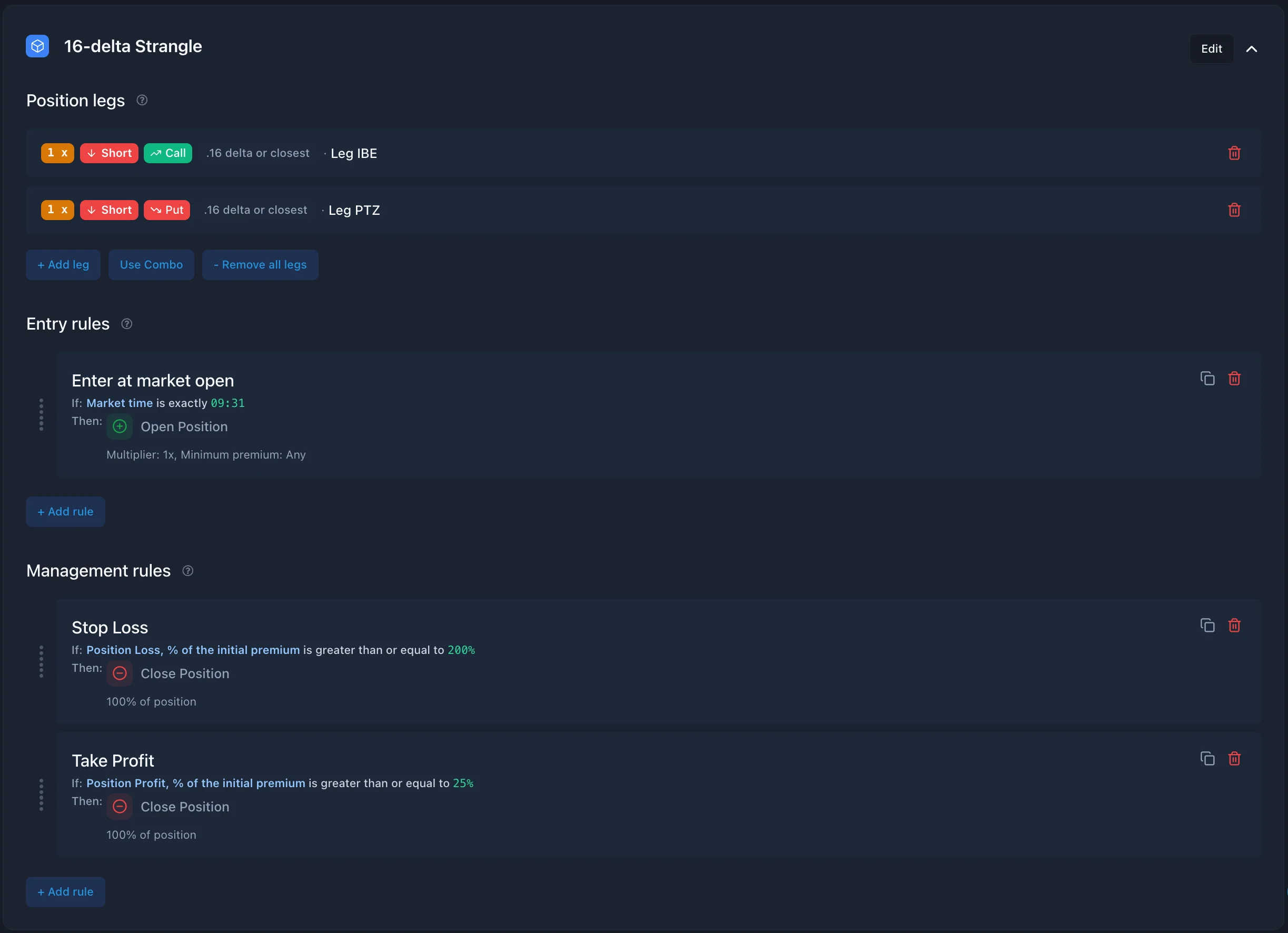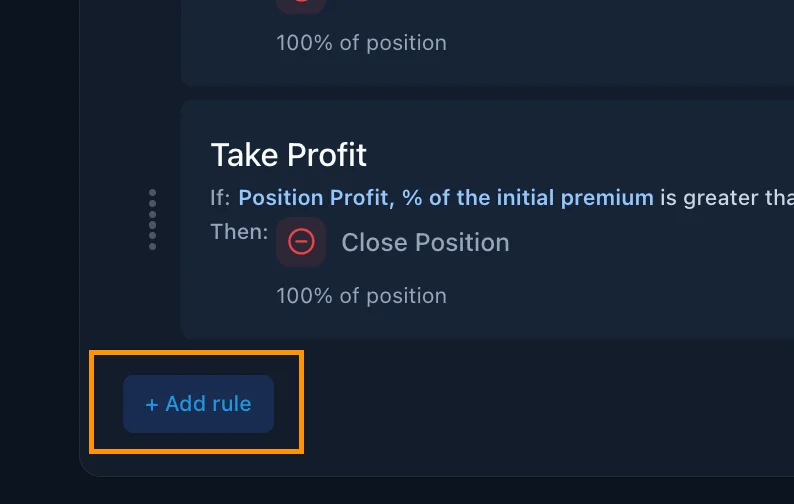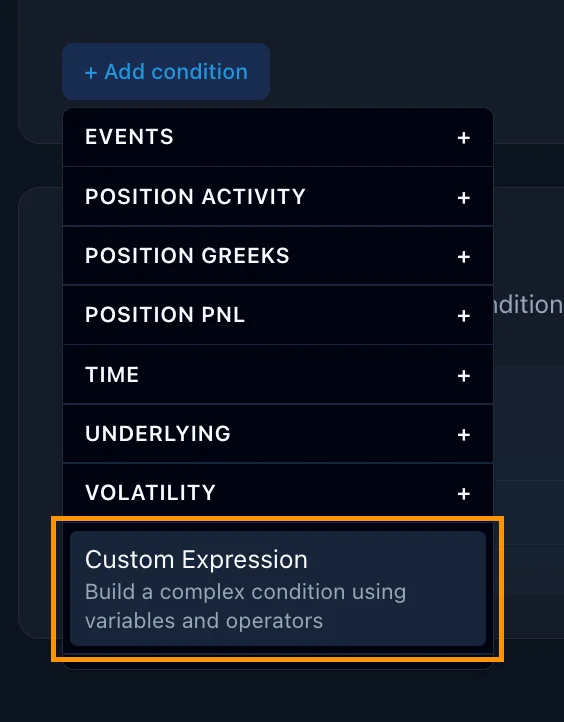How to Backtest a Trailing Stop for 0DTE Options: Complete Guide (No Coding Required)
Trading 0DTE options without proper exit strategies is like driving without brakes. A trailing stop can protect your profits while letting winning trades run — and now you can backtest this strategy visually without any coding using GreeksLab.
In this comprehensive guide, we'll walk you through setting up, backtesting, and optimizing a trailing stop strategy that could significantly improve your 0DTE options trading performance.
🎥 Watch the Complete Video Tutorial
Don't have time to watch? Follow the step-by-step guide below.
What Is a Trailing Stop in Options Trading?
A trailing stop is a dynamic exit mechanism that automatically adjusts your stop-loss level as your trade moves into profit. Unlike a fixed stop-loss, it "trails" behind the maximum profit achieved, protecting gains while allowing room for continued upside.
Key Benefits of Trailing Stops:
- Profit protection: Locks in gains before market reversals
- Reduced emotional trading: Automates exit decisions
- Maximized returns: Captures more profit from winning trades
- Risk management: Maintains disciplined position sizing
Why 0DTE Options Need Trailing Stops
Zero Days to Expiration (0DTE) options are particularly volatile, with profit windows that can disappear within minutes. Traditional fixed profit targets often leave money on the table, while trailing stops adapt to market movement in real-time.
Common 0DTE Trading Challenges:
- Rapid time decay (theta)
- High gamma exposure
- Quick profit reversals
- Emotional exit decisions
Setting Up Your Baseline Strategy in GreeksLab
Before adding a trailing stop, establish a baseline strategy to measure improvement against.
Example Base Strategy:
- Underlying: SPX
- Strategy Type: Short 16-delta strangle
- Entry Timing: Market open (9:31 AM EST)
- Profit Target: Close at 25% profit
- Stop Loss: Close at 200% loss

Run this baseline backtest first to establish your performance metrics. Record key statistics like:
- Total return
- Win rate
- Average daily PnL
- Maximum drawdown
- Sharpe ratio
Step-by-Step: Adding a Trailing Stop in GreeksLab
GreeksLab's visual rule builder makes implementing complex exit strategies simple. Here's how to add a trailing stop to your existing strategy:
Step 1: Access Management Rules
- Open your strategy in GreeksLab
- Scroll to Management Rules section
- Click "Add Rule"

Step 2: Configure the Trailing Stop Rule
- Rule Name: "Trailing Stop - 25pt"
- Rule Action: Close Position
Step 3: Build the Logic (Visual, No Code)

Using GreeksLab's Custom Expression builder:
Primary Condition: Profit Drawdown Check
- Left Side: Position PnL %
- Operator: is less than
- Value: Max PnL % minus 25

Secondary Condition: Profitability Check
As an example, we will add a secondary condition: we want our trailing stop to simulate only when position is profitable.
- Field: Position PnL %
- Operator: is greater than
- Value: 0

This creates a rule that says: "Close the position if current profit has dropped 25 percentage points from its peak, but only if the trade is still profitable overall."
Step 4: Alternative Dollar-Based Trailing Stop
For strategies with high premiums, consider absolute dollar values:

Primary Condition:
- Field: Position PnL ($)
- Operator: is less than
- Value: Max PnL ($) minus 100
This approach works well for strategies where percentage moves might be too sensitive.
Advanced Trailing Stop Configurations
Time-Based Trailing Stops
Add time conditions to prevent early exits:
- Only activate trailing stop after 30 minutes
- Different trailing distances for morning vs. afternoon trades
Volatility-Adjusted Trailing Stops
Modify trailing distance based on VIX levels:
- Tighter trailing stops in low volatility environments
- Wider stops during high volatility periods
Multiple Trailing Levels
Create tiered trailing stops:
- 15-point trail after 10% profit
- 25-point trail after 25% profit
- 35-point trail after 50% profit
Backtesting Your Trailing Stop Strategy
Running the Backtest
- Save your management rules
- Select appropriate date range
- Click "Run Backtest"
- Wait for completion (processing time varies by data range)
Key Metrics to Analyze
Compare your trailing stop results against the baseline:
Performance Metrics:
- Total Return: Overall profitability improvement
- Win Rate: Percentage of profitable trades
- Average Trade Duration: Impact on holding periods
- Maximum Drawdown: Risk assessment
Risk Metrics:
- Sharpe Ratio: Risk-adjusted returns
- Sortino Ratio: Downside deviation focus
- Maximum Consecutive Losses: Drawdown periods
Expected Results
Most traders see improvements in:
- Higher average daily PnL (10-30% improvement)
- Better Sharpe ratios (improved risk-adjusted returns)
- Reduced maximum drawdowns
- More consistent performance
Optimizing Your Trailing Stop Parameters
Finding the Optimal Trail Distance
Test different trailing stop distances to find your sweet spot:
Tight Trails (10-15 points):
- Pros: Better profit protection
- Cons: More frequent exits, potentially missing larger moves
Moderate Trails (20-30 points):
- Pros: Balanced approach, good for most strategies
- Cons: May give back more profit during reversals
Wide Trails (35+ points):
- Pros: Captures larger trends
- Cons: Less profit protection, higher drawdowns
Market Condition Adjustments
Adapt trailing distances based on market environment:
- Trending Markets: Use wider trails to capture momentum
- Choppy Markets: Use tighter trails to protect against whipsaws
- High Volatility: Increase trail distance to avoid noise
- Low Volatility: Decrease trail distance for precision
Common Trailing Stop Mistakes to Avoid
Over-Optimization
Don't create overly complex rules based on limited backtesting data. Simple, robust strategies often outperform in live trading.
Ignoring Transaction Costs
Factor in commissions and bid-ask spreads when setting trail distances. Very tight trails might eat into profits through excessive trading.
Not Testing Different Market Conditions
Backtest across various market environments:
- Bull markets
- Bear markets
- High volatility periods
- Low volatility periods
Real-World Implementation Tips
Paper Trading First
Before risking real capital, paper trade your trailing stop strategy for at least 30 days to:
- Understand execution timing
- Identify any technical issues
- Build confidence in the system
Frequently Asked Questions
How Often Should I Adjust My Trailing Stop Parameters?
Review and potentially adjust quarterly, but avoid constant tweaking. Stable parameters often perform better than frequently changed ones.
Can I Use Trailing Stops with Other Exit Strategies?
Yes, combine trailing stops with:
- Time-based exits
- Volatility-based adjustments
- Profit target scaling
Getting Started with Backtesting 0dte Trailing Stops
Immediate Steps:
- Sign up for GreeksLab if you haven't already
- Create your baseline strategy
- Run a backtest to establish benchmark performance
- Add the trailing stop rule using our step-by-step guide
- Compare results and adjust parameters as needed
Next Level:
- Experiment with different trail distances
- Test time-based modifications
- Explore volatility-adjusted parameters
Conclusion: Elevate Your 0DTE Trading Game
Trailing stops represent a significant evolution in options trading risk management. By letting profits run while protecting against reversals, they solve one of the biggest challenges in 0DTE trading: knowing when to exit.
GreeksLab's visual rule builder makes implementing these sophisticated strategies accessible to every trader, regardless of coding experience. The combination of powerful backtesting capabilities and intuitive design creates the perfect environment for strategy development and refinement.
Start small, test thoroughly, and gradually increase position sizes as you gain confidence in your trailing stop parameters. Remember, even a modest improvement in exit timing can significantly impact your overall trading performance.
The difference between good traders and great traders often comes down to discipline and systematic approach to exits. Trailing stops provide both — turning emotional decisions into data-driven rules that work even when you're not watching the screen.
Ready to backtest your first trailing stop strategy? Start your free GreeksLab trial today and see how dynamic exits can transform your 0DTE options trading results.
Get the most out of GreeksLab!
Create a free account or sign in to access:
- Backtester tool
- Flexible strategy builder
- High resolution data
- Advanced analytics
- And much more...